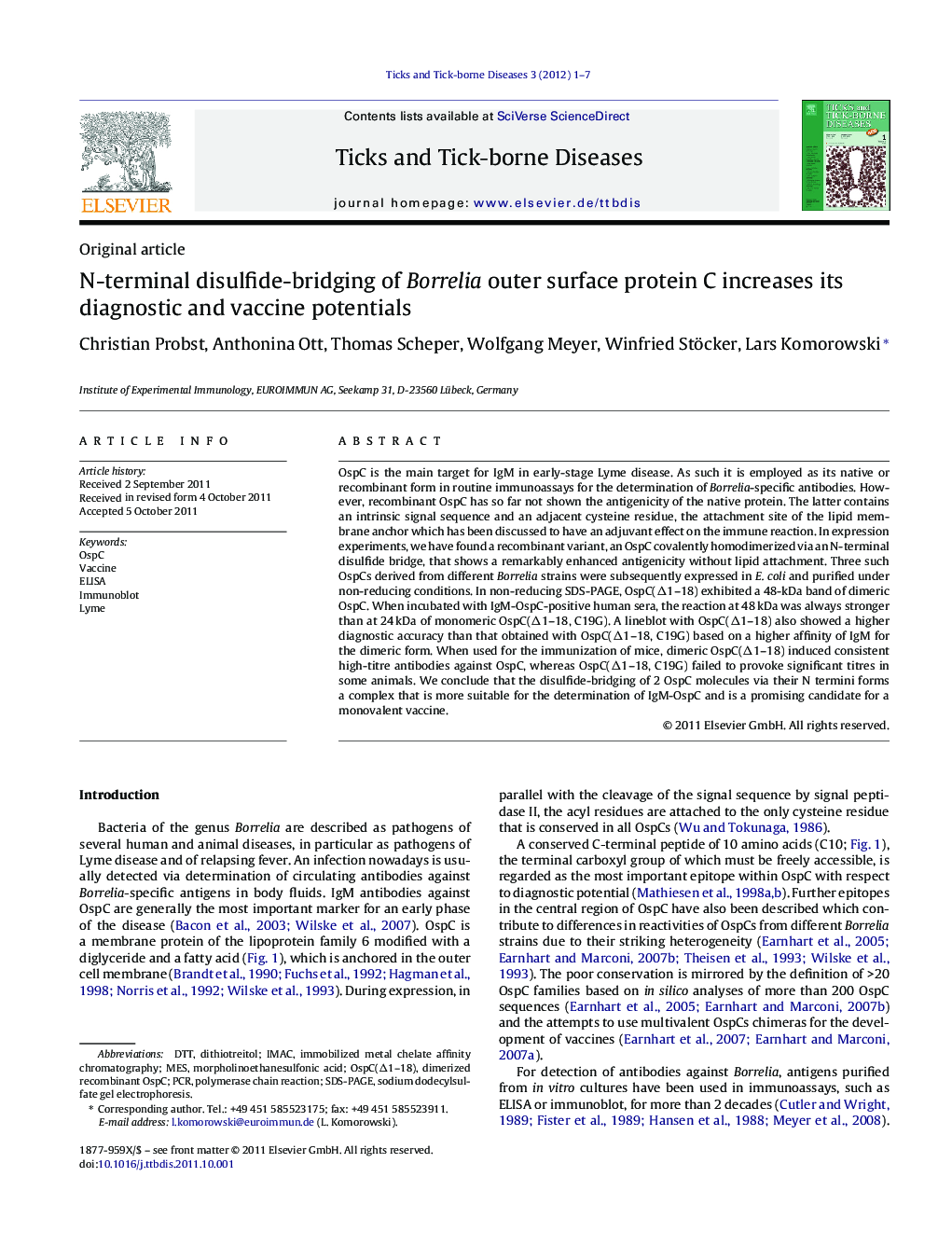| Article ID | Journal | Published Year | Pages | File Type |
|---|---|---|---|---|
| 2474277 | Ticks and Tick-borne Diseases | 2012 | 7 Pages |
OspC is the main target for IgM in early-stage Lyme disease. As such it is employed as its native or recombinant form in routine immunoassays for the determination of Borrelia-specific antibodies. However, recombinant OspC has so far not shown the antigenicity of the native protein. The latter contains an intrinsic signal sequence and an adjacent cysteine residue, the attachment site of the lipid membrane anchor which has been discussed to have an adjuvant effect on the immune reaction. In expression experiments, we have found a recombinant variant, an OspC covalently homodimerized via an N-terminal disulfide bridge, that shows a remarkably enhanced antigenicity without lipid attachment. Three such OspCs derived from different Borrelia strains were subsequently expressed in E. coli and purified under non-reducing conditions. In non-reducing SDS-PAGE, OspC(Δ1–18) exhibited a 48-kDa band of dimeric OspC. When incubated with IgM-OspC-positive human sera, the reaction at 48 kDa was always stronger than at 24 kDa of monomeric OspC(Δ1–18, C19G). A lineblot with OspC(Δ1–18) also showed a higher diagnostic accuracy than that obtained with OspC(Δ1–18, C19G) based on a higher affinity of IgM for the dimeric form. When used for the immunization of mice, dimeric OspC(Δ1–18) induced consistent high-titre antibodies against OspC, whereas OspC(Δ1–18, C19G) failed to provoke significant titres in some animals. We conclude that the disulfide-bridging of 2 OspC molecules via their N termini forms a complex that is more suitable for the determination of IgM-OspC and is a promising candidate for a monovalent vaccine.
